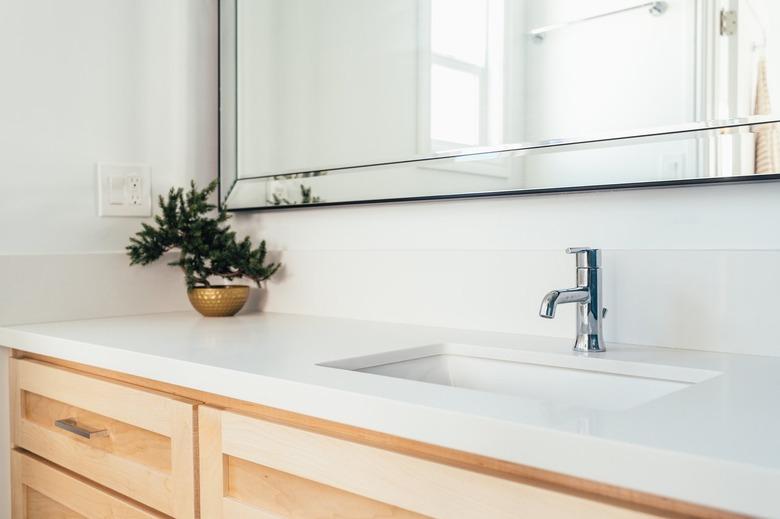How To Change The Color Of A Bathroom Sink
Over time, sinks can be prone to plenty of wear and tear. Scuffing, staining and discoloration can make a sink look dirty and aged, and no amount of cleaning can help. Replacing a sink can be an expensive DIY job, but you can change the color of a bathroom sink at home using a two-part refinishing kit.
If you want to get the most professional look possible when changing the color of your bathroom sink, undertake adequate prep work and follow the refinishing kit instructions carefully. By taking time and effort with this job, you can get the look of a brand-new sink for a fraction of the price.
Safety Precautions for Refinishing Sinks
When undertaking any DIY task, you must take your safety into consideration. Wearing a respirator and a pair of gloves is essential. You must also keep your bathroom well ventilated by using your exhaust fan and opening a window or door if possible. Wearing the right type of clothing is also key for proper safety during this job, including closed-toe shoes, long sleeves and kneepads if necessary.
Along with protecting yourself, you should also protect your bathroom. Laying down a dust sheet can help prevent paint drips from getting onto your bathroom floor. You'll also want to cover your faucets, drain cover and the edges of your sink with masking tape to protect them.
Cleaning Your Sink for Refinishing
Before undertaking a refinishing job, you'll want to ensure your sink is as clean as possible. Any leftover residue will prevent your refinishing kit from working properly. First, use dish soap to remove the majority of any old dirt and grime. You can use hydrogen peroxide on any areas with more persistent staining. Apply the product with a paper towel and allow it to sit for up to 30 minutes.
You can also try an abrasive cleaner such as Bar Keepers Friend on the most discolored and dirty areas of your sink. Rinse thoroughly and allow the sink time to dry fully before moving on to the next step.
Prepping a Sink
You should first remove the caulk around the edges of your sink using a caulk tool. Then, repair any larger chips or scuff marks using a kit. Next, sand the entire surface of your sink with 400- or 600-grit wet/dry sandpaper. Roughing the surface of your sink will ensure your paint can properly adhere to your sink's surface.
Always use a dust mask when sanding to protect your lungs from any small particles. After sanding, fully wipe out your sink and rinse to remove any dust particles. Make sure your sink is completely dry before going in with your refinishing kit.
Using a Refinishing Kit
A two-part refinishing kit is the best way to change the color of your sink. You'll also need a small roller to apply your new sink color plus a small foam brush to reach less accessible areas.
Use a paint stick to stir parts A and B separately. Then, add part A to part B and mix the two components for two minutes. If your paint seems too thick to apply to your sink, you can thin the mixture by adding 99.9 percent isopropyl alcohol (not rubbing alcohol). Be sure to use the stirred mixture within six hours.
Apply a full, even layer of the paint mixture to your sink and then allow at least 60 minutes for it to dry. You'll then want to use a second layer for maximum opacity and evenness.
After your second paint layer is fully dry, you can remove the masking tape from around the edges of your sink. Reseal the edges of your sink using silicone caulk to ensure it's waterproof and functional. You should wait at least three days to run water in the sink.
